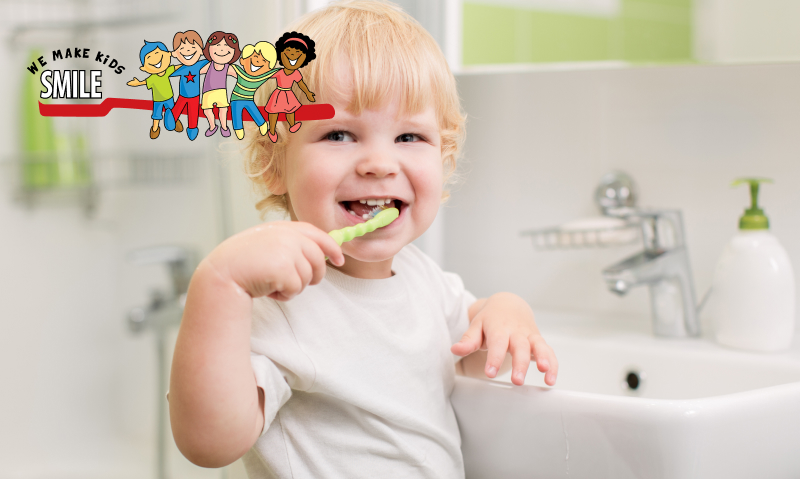Cavity Prevention Starts at Home
According to the CDC, tooth decay is the most common chronic disease experienced by children in the United States. Well over 50% of children and teens have developed one or more cavities in either their baby or permanent teeth. Although the numbers may seem grim, your child or teen isn’t necessarily destined to become a statistic of childhood tooth decay.
The surprising truth about tooth decay and kids’ cavities is that the problem is almost entirely preventable. Understanding why cavities happen and how to establish a preventive at-home oral care routine is the key to safeguarding your child’s oral health.
How and why do cavities develop?
The terms cavities and tooth decay are often used interchangeably, but they aren’t quite the same thing. Tooth decay is the name of the dental disease that leads to cavities. Cavities occur later in tooth decay when a literal hole or “cavity” develops in the tooth.
Tooth decay occurs in stages, but it’s initially triggered by bad oral bacteria producing enamel-eating acids. These bacteria love to eat sugars and starches, and when they feast, they produce acid as a waste product. These bad bacteria cultures flourish when a child consumes a lot of sugar and starches, even from natural sources like fruit.
The first stage of tooth decay is called demineralization. At this time the tooth enamel is just beginning to become etched by the acids.
The second stage is enamel damage. The demineralization has progressed to the earliest stages of a cavity. At first, it may only be a very shallow crater, but the enamel has been breached and is now quite vulnerable to further damage.
The third stage is dentin damage. The decay has passed the outer enamel layer into the tooth’s dentin layer. It’s become a cavity at this point, and though it may not necessarily hurt, it probably feels sensitive. For example, your child may tell you their tooth hurts when they eat ice cream.
The fourth stage is pulp damage, the final stage of a cavity’s development. The pulp layer of the tooth is soft and filled with nerves, which is why toothaches are a very common symptom. Without treatment, the tooth can become infected or abscessed and may need to be extracted.
Cavity prevention starts at home.
Your child’s oral health depends on dental care habits and routines established at home. Visiting a dentist every 6 months is necessary to maintain your child’s optimal oral health, but it isn’t a replacement for daily dental care. Both forms of care are needed for your child to achieve and maintain a healthy smile.
Brushing and Flossing
Proper tooth brushing and flossing keep teeth clean and reduce plaque build-up.
Your child should brush morning and night for two minutes per session. During each session, all surfaces of each tooth need to be brushed. Toddlers will need assistance, but all young children should be supervised to ensure they brush properly and for enough time. We recommend using a fun sand timer or playing a “brush with me” video for children to time their brushing.
Dentists recommend everyone floss at least once a day, including children. The best time to floss is before their bedtime brushing sessions. Doing this ensures no trapped food will be left in their teeth overnight.
Contrary to popular belief, having your child brush immediately after a meal isn’t advised because the tooth enamel is vulnerable. Make sure your child waits at least 30 minutes to an hour after a meal or after a non-water beverage before brushing.
Nutritious Meals
Food has a big impact on the development of kids’ cavities because baby tooth enamel is thinner than the enamel on adult teeth. The thinner enamel means sugars and acids from juice, soda, and candy can cause erosion surprisingly fast. Processed starches and simple carbohydrates can also cause damage because they turn into sugars in the saliva.
A poor diet with a lot of sugar and processed foods can make it impossible to avoid cavities, even if your child takes immaculate care of their teeth. However, a diet that reduces sugar consumption and focuses on nutritious meals can make it possible for your child to be cavity-free.
Oral Habits
Some oral habits common in children can increase their risk of tooth decay and pediatric gum disease. Sleeping with a bottle and prolonged pacifier use are two habits that can lead to significant tooth decay, even with a low-sugar diet and excellent brushing habits. Your child’s dentist or pediatrician can offer advice on how you can begin to wean them from these habits.
Has it been six months or more since your child’s last check-up?
Just like adults, children should visit their pediatric dentist every six months for a check-up and professional cleaning. If your child is at least one year old, they’re ready to begin seeing a dentist on a regular basis.
Schedule a visit at We Make Kids Smile by calling your favorite location or using our online request form.
